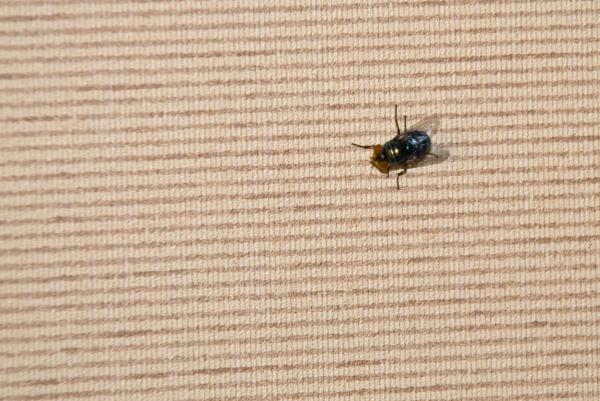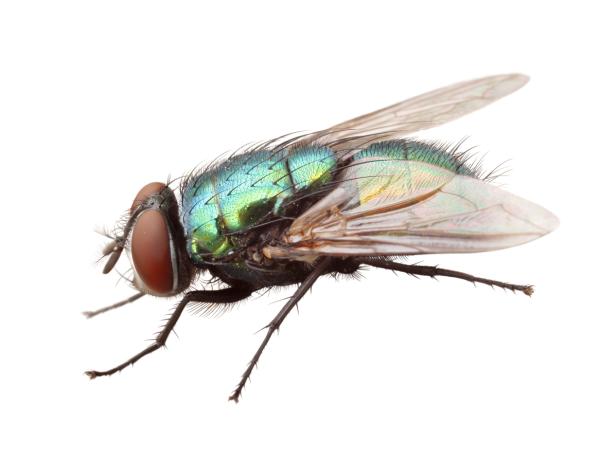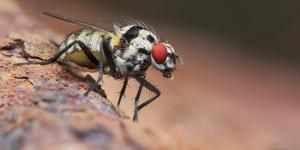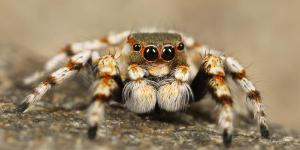Are Blue Bottle Flies Dangerous?


Lots of fly species are from the Midwest. One of these is the bluebottle fly, a fly that we commonly find inhabiting our home. This leads us to wonder, are blue bottle flies dangerous?
In this AnimalWised article we will explain
The dead truth about why these inhabit your house can be quite deadening (literally and figuratively). But are these flies dangerous? Bluebottle flies generally thrive on organic compounds.
They have sponging/piercing/sucking/lapping parts in their mouth and suck the liquid produced by stomach acids when coming into contact with organic creatures or objects.This AnimalWised article seeks to allay the concerns of those who wonder “are blue bottle flies dangerous or just a fly on the wall?”. Read on to know more about whether you should consider these flies lethal or not.
About blue bottle flies
The Blue bottle fly, also known as Calliphora vomitoria, is from the Diptera family. They have a unique blue color and are twice the size of a housefly. They are differentiated from other flies thanks to their bright colors, as well as their orange hair around their cheeks. The blue bottle fly can actually be blue, black, bronze, gold or green, but what is distinctive about the color of these flies is their metallic sheen.
These insects do not bite. However, they have a sponging/piercing/sucking parts in their mouth that use the liquid produced by stomach acids when coming into contact with organic creatures or objects. Blue bottle flies generally thrive on organic compounds, which is why they come into our homes to feed on any pieces of food they can find. However, in the wild, they will commonly feed on live animals' wounds.
Temperature can also have an effect on their distribution, as blue bottle flies are found most abundantly in spring or summer. These flies have a life span of about 6 weeks. It's definitely not long, but their reproduction helps them keep their abundant numbers.
A female blue bottle fly will lay her eggs where she feeds. This is generally in decaying meat, garbage or feces. The eggs will then go through the complete cycle of eggs, larva, pupa and adult. Development takes around 2 weeks. A female blue bottle lays around 2000-3000 eggs in her short lifespan of 6 weeks. When the newborns get hungry, they will feed on the decaying meat where they were born.

Possible dangers of blue bottle flies
Disease transmission
The most important deadly feature of this fly group is the transmission of diseases. Outdoor vendors and restaurants not only survive but thrive these days. A fly's resting spot just before it landed on your food item may be less than savory or even hygienic. Those lacking in personal hygiene and leaving decomposing food or organic matter outside, are just empowering the bluebottle flies to make you dangerously sick. The different pathogens carried by the fly include:
- E.coli
- Typhoid
- Dysentery
- Anthrax
- Tuberculosis
- Staphylococcus
Infestation
The bluebottle fly is known as the “filthy fly” because it survives and thrives on rotting matter including dead bodies. Dead animals stuck in chimneys can also cause the larva of the fly to drop into the fireplace, become pupae and infest the house and its occupants. Maggots are their best pals and these bluebottle flies are found in decaying food or organic matter.
Moreover, blue bottle flies lay eggs in wounds and dead tissue, which is why it may lay them on your pet's body and cause blood poisoning. Another issue is if you mistakenly eat food with blue bottle fly eggs. This can lead to myiasis, a body infection where larvae grow inside of you and feed off your tissues.
It's safe to say that you do not want blue bottle flies in your home, as the result can be dangerous.
How to get rid of blue bottle flies
Having blue bottle flies in your home can be dangerous as it can have a negative effect on your health due to the food you eat and the food these flies infest with their eggs. But, how can you get rid of blue bottle flies in your home?
First things first, you will want to keep a clean home. Do not leave old food lying around. Throw out any old food that may attract these flies. Watch out for crumbs lying around or even your pet's food. If your pet has eaten and left some food, it's important that you throw out their leftover food after 10-15min and clean their bowl. This is crucial as dogs can also get myiasis from eating food with blue bottle fly eggs.
Next, remember to take out the trash regularly. Do not leave it until it is overflowed. Many blue bottle flies will feed off of your trash and reproduce. This is why it's important to get rid of it regularly. You may also want to keep your doors closed and properly screen any windows so that these flies cannot enter your home. Be extra careful in summer.
Lastly, if you already have a blue bottle fly infestation, it's best to contact professionals to handle your pest infestation. These companies can also help with other insect infestations, such as insects that eat wood. They will create a specific program for your situation. Blue bottle flies are dangerous to our health so it's important for us to be extra careful with these insects.
More facts about the blue bottle fly
They are from one of 16,000 species belonging to the order Diptera. If you are not sure if you have blue bottle flies in your house or area, take a look at these facts to identify it properly.
How to identify a blue bottle fly
The unique shiny metallic abs of this fly make it easy to notice. The bluebottle fly has a thorax, head, and abdomen. It is the abs which stick out the most. Their heads have large red compound eyes and black antennae. Wings have veins that are light brownish in color. The fly has a sturdy exoskeleton with hairs. These hairs on the legs, body and mouth act as receptors for smell and taste. The outer cuticle, the basement membrane, and the epidermis constitute the exoskeleton. The cuticle has sensory hairs.
The adult bluebottle fly ranges from ¼ of an inch to three-eighth of an inch. It looks like a common housefly with the exception of its distinctive blue color.

The life of a blue bottle fly
The life cycle of a bluebottle fly is akin to other bottle flies. This comprises the egg, larva, pupa and adult stages.
Its diet includes carrion, pollen, and nectar. It pollinates in the same way as a honey bee. The blue bottle larvae is a cannibal too. Besides eating animal corpses it is predacious or feeding on other flies larvae. In fact, the fly serves as a useful indicator to forensic teams to make out how long someone was dead.
The female bluebottle fly lays up to one hundred and eighty eggs! This white or yellowish worm or larva that hatches from the eggs is a maggot-like creature. Two to ten days later, it pupates and emerges in two weeks from the cocoon.
Other fun facts
- A massive group of bluebottle flies is a swarm.
- Each eye of the bluebottle fly has four thousand facets to help them see.
- The bluebottle's smelling distance is over 750 yards. It expels matter 4-5 minutes.
- It can travel three hundred times the length of its body in a single second.
- Wings move at the rate of two hundred times per second.
- Another interesting fact is the bluebottle flies can succumb to fungal disease!
- While these flies do not live long, they ensure other species life spans are threatened too!
If you want to read similar articles to Are Blue Bottle Flies Dangerous?, we recommend you visit our Facts about the animal kingdom category.







